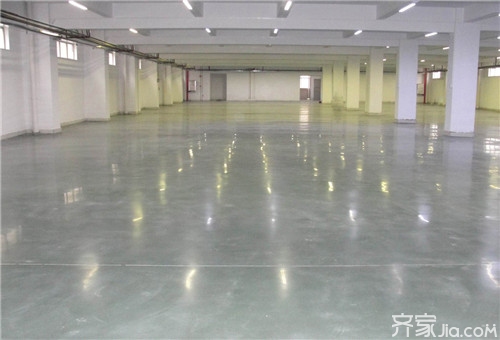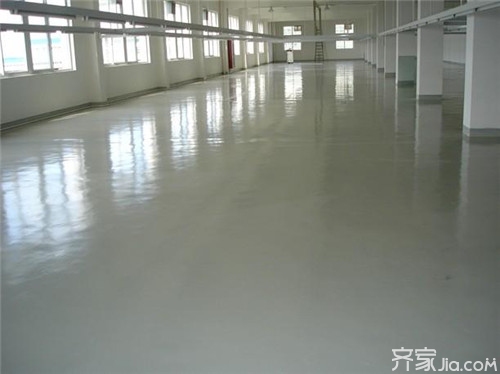Wear-resistant hardened floor classification wear-resistant hardened floor construction plan
The ground hardener material is used for the wear-resistant material. The material consists of non-metallic mineral aggregates, metal mineral aggregates and special additives. The wear-resistant hardened floor has the advantages of high surface hardness, high density, wear resistance, no dust, no peeling, economy, applicability, and wide range. The integrated wear-resistant floor abandons the traditional practice of separating the concrete base layer from the surface layer, thereby eliminating the common defects of cracks and empty drums caused by the poor combination of the base layer and the surface layer, simplifying the process, shortening the construction period, and saving Labor costs are increasingly used in factories, warehouses, runways, and docks.

Hard-wearing floor profile
The wear-resistant hardened floor is a ground wear-resistant material containing special mineral aggregates, inorganic pigments and additives. At the initial settling stage of primary concrete, it is evenly spread on the concrete surface and is subjected to professional mechanical construction so as to form a whole with the concrete floor and become a high-performance wear-resistant floor with high density and coloration.
Hardened floor classification
There are four types of wear-resistant hardened floors: mineral aggregate floor, metal aggregate floor, non-pyremic floor (explosion-proof floor), and anti-static floor.
At present, the floors of factories, supermarkets, schools and other buildings in China are generally made of hardened and wear-resistant flooring materials with mineral aggregates. If higher strength and better wear resistance are required, metal aggregates can be used to harden and harden the floor. Ping materials; non-fire floor (explosion-proof floor), anti-static floor are used for floors with special requirements.

Hard wear-resistant floor construction plan
First, wear-resistant materials
Hardener materials are divided into two components: aggregate and cement. The aggregate is sand-like, with an average particle size of 1.5mm, which accounts for about 60% of the total; the cement is a treated high-grade cement. In addition to the cement color, there are various colors such as red, yellow, green, and gray. select. The hardener aggregate composition is natural ore. Department of rust-free non-metallic aggregate, the hardness of Moh's above 8 degrees. Except natural ore aggregates, the weight of other cements, pigments, etc. does not exceed 25% of the total weight. The amount of wear-resistant material is determined according to the material specification and design requirements
Second, construction equipment
In addition to the use of conventional machines with concrete floors, prepare the following tools.
(1) bleeding tool: rubber pipe or vacuum suction equipment.
(2) Leveling out the pulp tool: the middle sand-filled Ф150 steel pipe, the length is more than the width of the ground model more than 500mm, and the two ends are equipped with a rotatable pull ring.
(3) Calender: Made in Canada. The chassis is a four-leaf steel sheet. The surface layer can be calendered by adjusting the angle of the steel sheet (used for a softer finish with a small angle for a harder finish).
(4) flat-bottom rubber shoes: concrete used after the initial setting; waterproof paper shoes or waterproof paper bag;
Third, the construction organization
With 500m2/d as the standard, in addition to the persons who routinely pour concrete on the ground, the following construction workers are required: 3 persons for concrete leveling, 2 persons for transportation of wear-resistant materials, 3 persons for spreading of wear-resistant materials, and 3 for calendering. People, sickle repair three people. According to the above standards, continuous construction, 6 to 7 troweling machines and the corresponding personnel can complete 2000m2/d.
Fourth, construction preparation
(1) Floor gravel cushion is compacted with a roller.
(2) Set the template (steel template or channel steel) according to the design elevation, and check the elevation of the template at any time with the level gauge, and adjust the deviation with a wedge block.
(3) According to the requirements of the specification, the slits shall be separated by longitudinal and horizontal axes.
(4) The maximum particle size of gravel used in concrete is ≤ 30mm, and the water-cement ratio and slump should be as small as possible.
(5) The concrete number is not less than 25, and the slump in the site is between 75-100 mm.

Hardened floor performance
The hardened wear-resistant floor has properties such as wear resistance, compactness, no dust, high strength, and good coloring.
1. Strengthen the wear resistance, pressure resistance and impact resistance of concrete floors.
2, to form a high density, easy to clean, anti-infiltration of the ground.
3. Reduce the wear of the wheel of the shipping tool on the ground.
4. The simultaneous construction of floor construction and concrete construction can greatly improve the progress of the project.
Summary: The relevant information on the classification of wear-resistant and hardened flooring and the construction scheme of wear-resistant and hardened flooring was introduced here. I hope this article will be helpful to everyone. If you still have something you don't understand, you can leave a message to Xiaobian at the bottom. We will answer your questions as soon as possible.
What is the tile wear-resistant and wear-resistant floor mat construction installation color matching scheme
Yantai Ciso Lubrication Technology Co.,LTD , https://www.cisolubrication.com